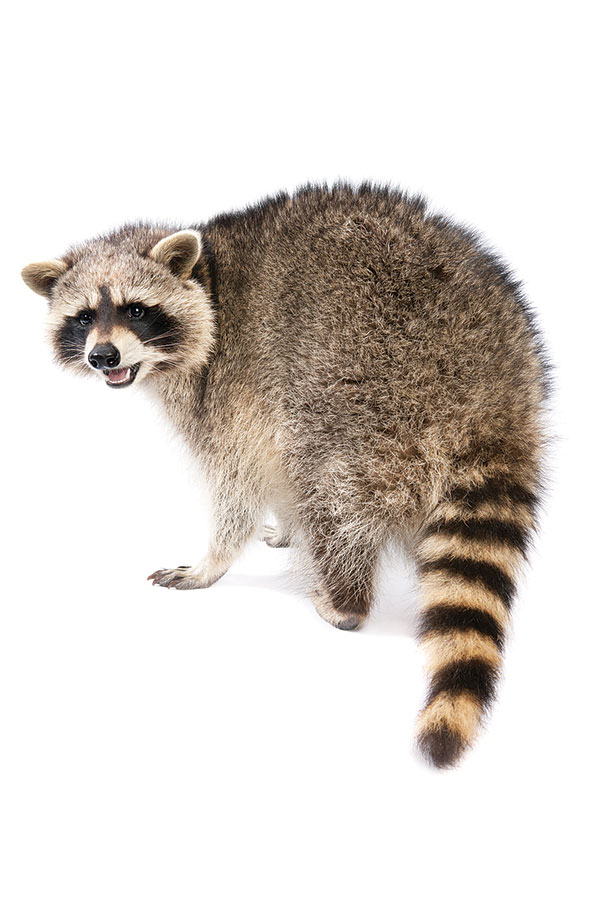Climate and location can determine which wildlife is the biggest nuisance for Critter Control throughout the year. The following list is the most applicable for spring and summer:
- Raccoons are nocturnal mammals common throughout North America. Besides the native northern raccoon (Procyon lotor), there are six other species, most of which live on tropical islands. These clever creatures have nimble hands and are intelligent problem solvers capable of opening latches, turning doorknobs, climbing, swimming and running quickly.
- Squirrels are divided into three groups: tree, ground and flying. Species categorized in all three have the capacity to cause destruction on lawns and in homes. Some of the more common species that regularly come into contact with humans and manmade structures include fox (Sciurus niger), eastern gray (S. carolinensis) and red (S. vulgaris) squirrels.
- Skunks (Mephitidae), which can be found throughout the continental U.S., are known for their acrid, pungent odor and black-and-white stripes. Their musk, which is produced by a pair of anal scent glands, can be smelled from far away. The bodily chemicals that produce the odor irritate multiple senses. Nocturnal and omnivorous, they eat many different foods, such as small insects, amphibians, rodents and garbage.
- Birds feed on insects, rodents, worms, fish and many other animals. Aside from pigeons, sparrows and starlings, most birds are afforded considerable protection by laws, regulations and public sentiment.
- Moles are mammals of the order Eulipotyphla, which includes hedgehogs and shrews. Subterranean by nature, they’re solitary creatures that can be found throughout the U.S. Their tunneling habits mar yards, gardens and farms.
- More than 40 bat (Chiroptera) species exist in the U.S., and nearly 1,000 different species live throughout the world. Although bats are capable of spreading disease, their existence is beneficial to humans and the environment. While some feed on nectar, other small mammals, fish or blood, most are insectivores and maintain a diet of night-flying insects.
- Commonly called meadow mice, voles (Cricetidae) thrive in grasslands and mountains. They can be found throughout the U.S. and feed on various plants. Their feeding habits damage growing trees, lawns and gardens. Voles are easily distinguishable from other commensal rodents by their short tails and less-pronounced ears.
- Possums (Didelphimorphia spp.) are the only marsupials native to North America, where they thrive in wooded and suburban areas east of the Rocky Mountains. The nocturnal mammals eat almost anything, including garbage, roadkill, rotten fruit, grass, insects, birds and snakes. They have a reputation for playing dead by curling onto their back, sticking their tongue out, squirting foul fluid from their anuses, and staring off into space when confronted by predators. They also attempt to scare predators by baring their teeth and hissing.
- The Norway rat (Rattus norvegicus), which is the most commonly found rat pest in the U.S., is also called a brown, house, sewer or wharf rat. Found in every state, it’s considered the most economically important rat in the U.S.
- The house mouse (Mus musculus) is second only to humans as the most common mammal in urban areas throughout the country. House mice are notorious nibblers that climb, jump and swim to reach to their favorite foods, which are often found in houses, farms, open fields and commercial buildings. Curious and fearless, they’ll chew through walls, electrical cables and storage containers to get what they want.

Leave A Comment